Introduction
The United Nations Food and Agriculture Organization named 2015 the "Year of Soil" to acknowledge the fact that soils are an important resource for everything from agriculture to human health to water filtration, not to mention the obvious benefits of the food that grows out of soil. The United Stated Department of Agriculture (USDA) states that for every 1 percent increase in organic matter in soil, US farms could store the amount of water that goes over Niagara Falls in 150 days (Nichols 2015). This article is intended for growers who wish to improve the quality of their soil, from large-scale commercial farmers to individual home growers, by identifying and managing some common soil constraints. This paper focuses on (i) common constraints of soil health and related soil management solutions and (ii) soil health tests relevant to the soils of Florida.
What is soil health?
Soil health is a term synonymous with soil quality. It refers to the chemical, biological, and physical characteristics of a soil. All these factors influence a soil's ability to function sustainably and to satisfy the needs of humans, support plants, and cycle elements, water, and energy between earth systems. It is often said that a handful of productive soil contains more living organisms than people living on earth. Managing soil health involves maintaining a habitat for these living organisms, which include bacteria, algae, fungi, earthworms, beetles, mites, nematodes, and plants. When these soil organisms die and decay, organic matter is created, which is primarily made up of carbon compounds. Organic matter is a key component of soil health because it fuels the diverse biological functions of soil organisms, which obtain their energy and nutrients by breaking down plant residues (Follett et al. 1987). Biologically diverse food webs can reduce pest damage to crops by maintaining populations of beneficial insects and microorganisms that can feed upon pest species or outcompete them for resources. Organic matter improves soil structure, which reduces compaction, and minimizes erosion by enhancing macropore stability and water infiltration into the soil. Enhanced soil structure also improves the ability of agricultural fields to withstand conditions of drought or extreme rainfall. Such hydrology considerations are particularly relevant to the health of Florida soils because potential drainage issues and surface runoff are widespread (Figure 1). The mineralization of organic matter helps supply crops with essential nutrients, including nitrogen, phosphorus, sulfur, and most of the micronutrients. Therefore, agronomic practices should consider these various biological, physical, and chemical characteristics of soil health and the integrated role soil organic matter plays in supporting agricultural systems.
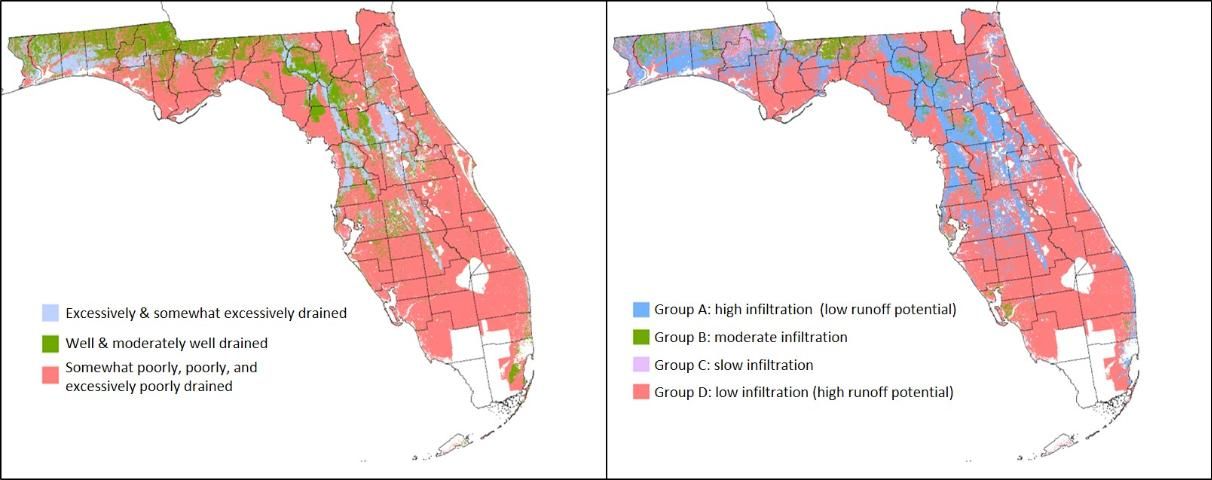
Credit: Allen Bacon, UF/IFAS
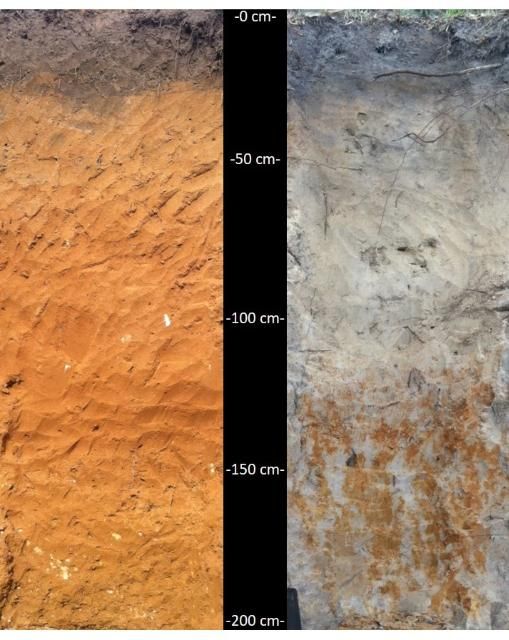
Testing for Soil Health
Soils can be tested for soil health in the field and in the lab. Some qualitative assessments that can be conducted in the field include assessing the color and smell of the soil, the root length, and the nodulation of legumes; examining for the presence of earthworms; and visually examining a growing crop for disease and nutrient deficiencies. The most basic diagnostic is to poke the soil with your finger. If the soil is hard or crusty and difficult to push your finger through, then you may be dealing with a poor soil or a poorly managed soil. However, if the soil breaks apart easily with your fingers and opens up, this indicates that the soil has sufficient pore spaces for the plant roots to grow through. The smell of the soil may also be an indicator of soil health. Soils that support abundant populations of bacteria may have an "earthy" odor associated with the presence of actinomycetes (Ramano and Safferman 1963). The color of a soil can also be indicative of its condition. Soils that are poorly drained will appear grayish instead of brown, black, or red. Obtaining further information on soil properties can require the use of specialized equipment from a laboratory or a field-testing kit (Liebig et al. 1996). Soil laboratories have recently begun to offer quantitative testing of essential soil processes.
Common Constraints of Soil Health
Modern agricultural practices can contribute to soil degradation. Practices such as the failure to return organic residues to the soil, intensive tillage, overgrazing, limited crop rotation, and excessive application of fertilizers and pesticides can deplete soil organic matter and cause the buildup of pests, pathogens, heavy metals, or salinity over time. Some of these practices may need to be implemented regularly for various purposes on the farm, but farmers should consider managing for their effect on soil health. Other soil constraints may occur naturally depending on soil type. For example, Spodosols are naturally acidic and may require lime, while shallow Histosols in south Florida tend to be alkaline due to the presence of calcium carbonate bedrock. Soil texture also influences the ability of a soil to store organic matter. Sandy soils contain less organic matter than soils containing fine-textured silts and clays because sands have larger pore sizes that can store more oxygen, which increases the decomposition rate of organic matter. Strong chemical bonds between clay and silt particles and organic matter can also slow down decomposition rates (Herrick et al. 2001). Florida's subtropical environment is another contributing factor in depleting organic matter because the climate allows soil organisms to break down organic matter for longer periods of the year at faster rates than in more temperate regions. Discussed below are some of the common soil constraints found in Florida and appropriate soil management solutions that can help improve soil quality.
Soil Compaction and Poor Aggregation: Soil compaction and aggregation affect root growth, erosion, and the water storage capacity. Applying organic amendments and limiting tillage can mitigate compaction and poor aggregation. Soils become "addicted" to tillage when they require tillage to break up compaction. Transitioning to limited or no till will help to retain organic matter and alleviate compaction and poor aggregation in the long term, but will not immediately solve compaction issues.
Weed, Pathogen, and Pest Pressure: Weeds, pathogens, and pest pressure significantly reduce crop yields throughout the world and are major management considerations for farmers. Integrated pest management approaches should be considered for dealing with these constraints. Healthy populations of beneficial organisms, cover crops, and crop rotation are important soil management practices that can limit these pressures while building soil health.
Soil Fertility Issues: Crops require a sufficient supply of nutrients for optimal growth and yield, but excess nutrients can damage crops and pollute waterways. Farmers also waste money when they apply more than the optimal amount of fertilizer to their crop. Soil tests and fertilizer recommendations from testing labs are essential to applying the ideal fertilizer rate to crops.
Limited Soil Depth: Soil depth is important in the area that soil roots penetrate in search of nutrients and water. Insufficient soil depth can stunt root growth and leave fields at higher risk of flooding during extreme rainfall events. Soil subsidence and plow layers may reduce soil depth in the root zone in Florida. Deep tillage equipment can lower plow layers, while adding organic amendments and keeping fields flooded can reduce soil subsidence.
Salinity: In Florida, salinity is prevalent in coastal areas or may occur due to excessive application of fertilizers and the use of poor-quality irrigation water. Salinity can be treated by applying excessive amounts of water to flush salts out of the root zone. Artificial drainage and salt-tolerant plants can also help to remove salts from the soil profile.
Heavy Metal Contamination: Heavy metal contamination can affect soils. Heavy metals can be managed to become less soluble and so less likely to be absorbed by plants by increasing pH to 6.5 or higher, draining soils, or applying phosphate.
Measuring and Managing for Soil Health
Not all soil tests are equally relevant to any given site. For example, earthworms are not present in all healthy soils but they are generally a good indicator of soil quality in agricultural systems. Tests that can be conducted in the field with the use of a field kit include active carbon, earthworms, surface hardness, subsurface hardness, some nutrients tests, pH, and electrical conductivity. Penetrometers are important tools for measuring surface hardness and subsurface hardness in the field. Pocket spectrophotometers are available for measuring active carbon, and field conductivity meters are available for measuring electrical conductivity. Indicator strips can be used to measure both soil-pH and soil-nitrate, an important form of plant-available nitrogen. Other tests are best conducted in the laboratory where specialized equipment can be used and results are less likely to be influenced by user bias. Some of the common tests used to evaluate soil health are physical tests, chemical tests, and biological tests.
The UF/IFAS Extension Soil Testing Laboratory offers various specialized tests for crops, including standard soil fertility tests and tests for micronutrients, pH, organic matter, and electrical conductivity. Traditional soil tests have tended to focus more heavily on chemical indicators than biological and physical indicators of soil quality due to their role in supporting crop nutrition. We recommend that soil health assessments be used to supplement these tests, because the physical and biological functions of soil influence nutrient availability. No matter how soils are assessed they should be tested at similar times each year using the same methods or laboratory in order to accurately measure changes in the soil over time.
Physical Tests
Bulk Density is determined by measuring soil mass in the known core volume.
Available Water Capacity is an indicator of the quantity of water that a sample of soil can store for plant use. Uses pressure chambers to find the difference between how much water samples store at field capacity and wilting point.
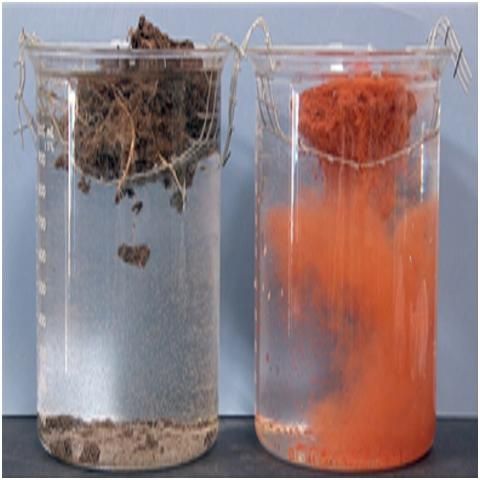
Surface Hardness is a measure of compaction in the soil surface (0–6 inch depth) using a field penetrometer.
Subsurface Hardness is a measure of subsurface compaction (6–18 inch depth) using a field penetrometer.
Wet Aggregate Stability is a measure of how well soil aggregates withstand disintegration from rain. It can be measured by placing a sample of soil on a sieve and simulating a standardized rainfall event. The soil that remains on the sieve determines the percent aggregate stability.
Chemical Tests
Macro- and Micronutrients a measurement of the macronutrients and micronutrients is essential for crop growth. This is generally included in a standard soil testing lab.
pH is a measure of the acidity or alkalinity of the soil which affects crops ability to take up nutrients can be measured using a pH meter or indicator strips that use dyes that change color.
Electrical Conductivity is a measure of the salinity in the soil. It is determined using an electrical conductivity meter.
Heavy Metals is a measure of the level of heavy metals in the soil that could damage human or plant health. They are determined by digesting soil with concentrated acid at high temperature.
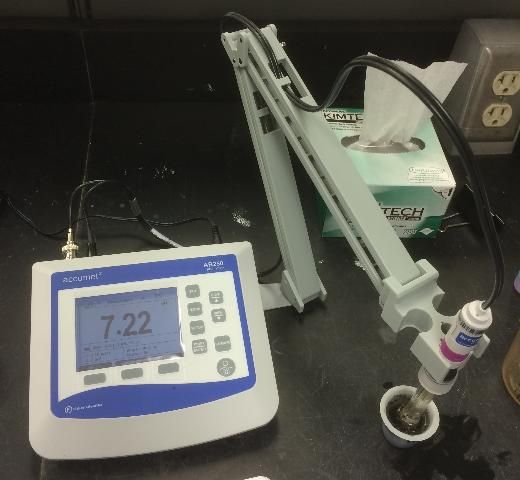
Biological Tests
Organic Matter is a measure of the organic matter content of a sample of soil. A 500°C furnace is used to find the mass of oven-dried soil lost on combustion.
Earthworms is a measure of the number of earthworms in a square foot by 12-inch-deep hole. Earthworms' activity in the soil assists with cycling organic matter and improves infiltration and aggregation.
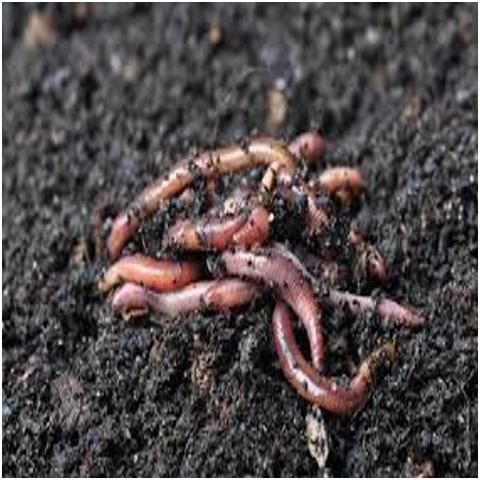
Soil Respiration is a measure of the carbon dioxide (CO2) produced by soil microbes, a useful indicator of their biological activity. It is determined by wetting air-dried soil and capturing and quantifying CO2 produced.
Active Carbon is a measure of the portion of organic matter that can serve as a food source for soil organisms. It is measured by quantifying potassium permanganate oxidation using a spectrophotometer.
Soil Protein is determined using sodium citrate extraction followed by the colorimetric bicinchoninic acid (BCA) method.
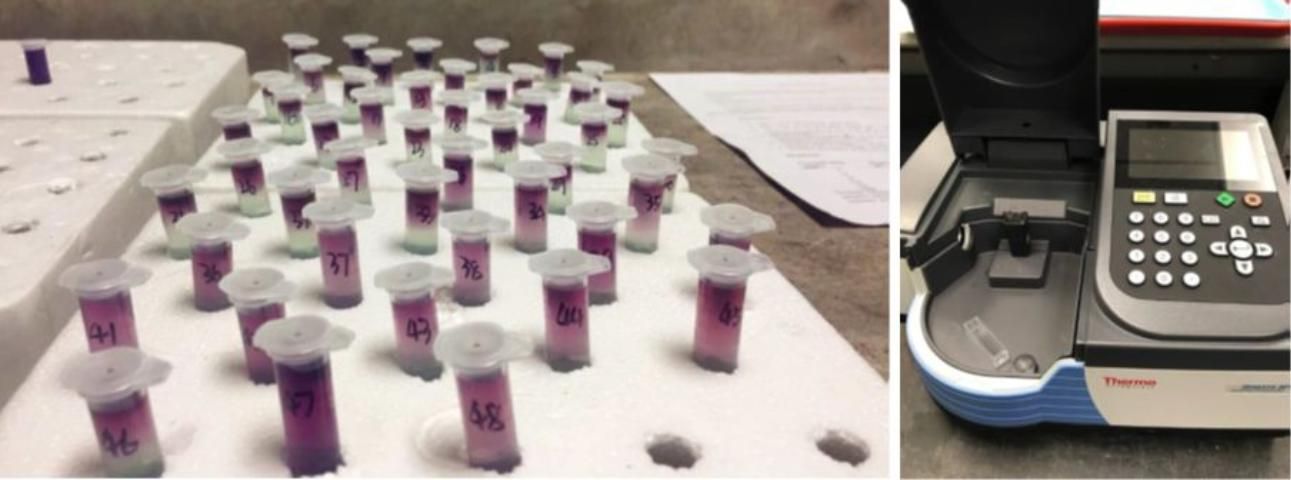
Conclusions
Growers interested in improving soil health in their fields should keep in mind that soil management practices change soil quality slowly over time. The use of cover crops, crop rotation, organic amendments, and limited tillage are important practices to consider for increasing soil organic matter content, notably by adding organic materials with qualities affecting soil characteristics differently from the crop debris and crop roots. It is important to maintain a "green carpet" across the soil surface, because this supports a living root system with a robust population of soil organisms. Over time these practices will help eliminate many soil constraints that often stem from the depletion of soil organic matter. Healthy soils will be more resilient to extreme weather events, support diverse populations of soil organisms, and save farmers money on inputs, such as fertilizer, while maintaining or increasing yields. This sustainable use of the soil will also allow farmers to leave behind fertile farmland to support and feed the next generation.
References
Follett, R. F., J. W. B. Stewart, and C. V. Cole. 1987. "Soil Fertility and Organic Matter as Critical Components of Production Systems." Special Publication No. 19. Madison, WI: Soil Science Society of America.
Herrick, J. E., W. G. Whitford, A. G. de Soyza, J.W. Van Zee, K.M. Havstad, C.A. Seybold, and M. Walton. 2001. "Soil aggregate stability kit for field-based soil quality and rangeland health evaluations." Catena. 44:27–35.
Liebig, M. A., J. W. Doran, and J. C. Gardner. 1996. "Evaluation of a field test kit for measuring selected soil quality indicators." Agronomy Journal. 88: 683–686.
Moebius-Clune, B. N., D. J. Moebius-Clune, B. K. Gugino, O. J. Idowu, R. R. Schindelbeck, A. J. Ristow, H. M. van Es, et al. 2016. Comprehensive Assessment of Soil Health–The Cornell Framework Manual, Edition 3.1, Cornell University, Geneva, NY.
Nichols, R. 2015. "A Hedge against Drought: Why Healthy Soil is 'Water in the Bank'." USDA-NRCS (posted May 12, 2015). http://www.usda.gov/media/blog/2015/05/12/hedge-against-drought-why-healthy-soil-water-bank
Romano, A., and R. Safferman. 1963. "Studies on actinomycetes and their odors." Journal of American Water Works Association. 55:169–176.